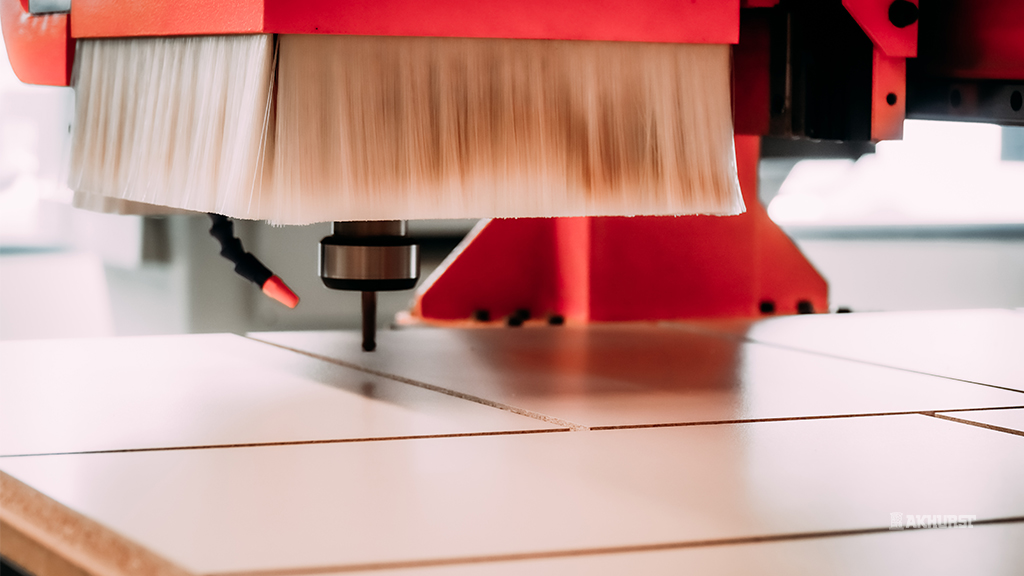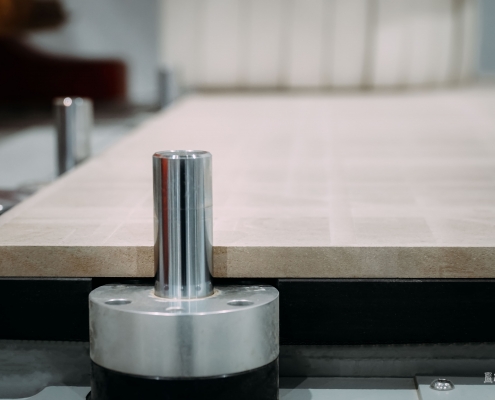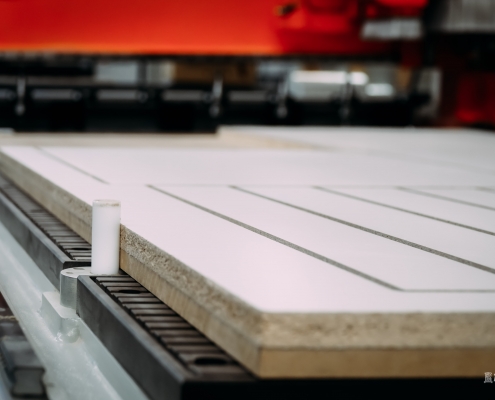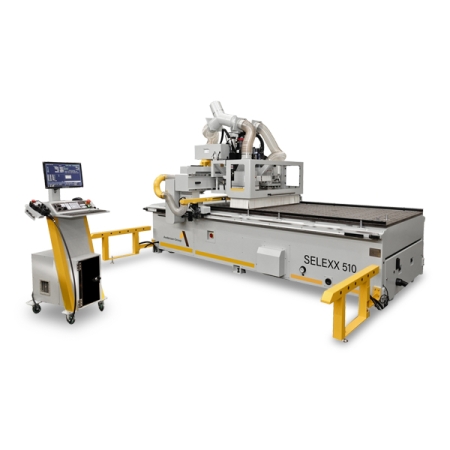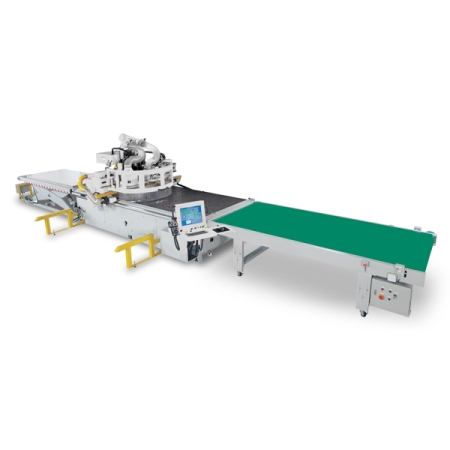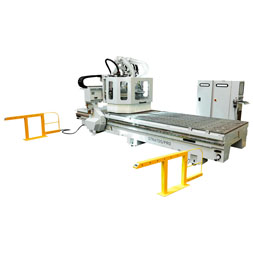CNC Series: Vacuum, When Design and Efficiency Mean Everything.
This is the last and part three of our CNC blog series on CNC router productivity – CNC Series: Vacuum, when design and efficiency mean everything, Here, we will focus on the importance of an efficiently designed vacuum system for part hold down in nesting operations. First, we discussed “How cutting speed affects your cutter life,” and in part two, we spoke about “Weight, where bigger is better.” When it comes to vacuum hold down a bigger pump is not necessarily the answer. More important is the design of the vacuum table and how efficient it is at holding small parts during machining operations.
One may not immediately understand how proper vacuum hold-down can affect productivity on your CNC router. If an operator notices parts moving during cutting operations, they tend to slow the machine down to reduce the side force on the part. There are a few issues that arise from this decision. First, you immediately slow down your production, limiting the number of parts you can cut in a day. Second, as we outlined in part one of our CNC blog series, cutters will begin to break down quicker the slower you cut, as this will create friction. This increased friction will cause heat, which will break down the cutting edge. This leads to greatly increased costs for router bits, and as explained earlier, this amount can be quite staggering. As the cutter dulls further, this can also cause parts to move, which compounds the issues.
When looking at efficient vacuum tables, you need to look “under the hood” to determine how airflow goes from the table through the pump. Anderson and Omnitech CNC routers employ a large plenum or void under the entire table zones. For instance, on the Omnitech Selexx series, two large diameter pipes are going to both zones of the vacuum table (4×8 or 5×10). This pipe goes directly to the plenum and does not pass through any other dispersal valves. This results in optimum flow of vacuum with the absolute minimal restriction. On other CNC routers, the vacuum pump is typically connected to a disbursement valve with small diameter hoses coming out of it and going to numerous cavities under the table. Where Omnitech typically generates around 55 CFM from the hole on the table, other CNC’s with small diameter hoses only generate around 11 CFM. Picture drinking a Slurpee from a standard straw and then getting a proper wide-mouth straw. It’s far more efficient.
Tips for optimum vacuum flow:
- Use lower quality 1,” or 3/4″ MDF as the vacuum will flow better; never use LFD (flows too much) or HDF (doesn’t flow enough).
- Surface both sides of the MDF before using it to remove the shiny surface to open up the pours.
- Use recessed nylon screws to hold your MDF sheet in place on the machine table; this limits the need to flip the sheet when it starts to cup. If not using screws to secure the MDF sheet, watch for cupping and flip the sheet when the vacuum can no longer pull the corners down.
- When replacing your MDF sheet, check that the table gasket is in the grooves and replace if the gasket remains flat and is no longer round.
- Limit cut-through on your material to 0.1mm (0.004″) to eliminate any deep grooving where vacuum can escape.
- Set your small part size automatic onion skinning parameters correctly for narrow and/or small square area pieces.
- Start and stop your cuts on the longest edge of a given part to limit the “push” of the cutter.
- Surface the spoilboard after 20 to 25 sheets approximately; the more it is grooved, the more vacuum you will lose, especially on smaller parts.
- Ensure the spoilboard is completely covered if you are only machining a half sheet, for example. Use an offcut or piece of laminate to cover the exposed areas. Remember, this can be a significant source of leaks.
- Clean vacuum pump filters regularly, daily, weekly or when you notice at what frequency they are clogging; clogged filters can quickly affect holding ability.
- Don’t have your vacuum pump too far away from the machine, and ensure the lines are as straight as possible to maximize vacuum flow with as little friction as possible.
In summary, with an optimized and efficient vacuum table, you can hold smaller parts at top speeds, leading to greater productivity and longer cutter life, with less rejects. When considering purchasing a CNC router, look at how the vacuum system is designed rather than only the size or quantity of vacuum pumps. Most single table operations should only require a single 9 HP Becker vacuum pump. If you are quoted more than a single pump, you need to ask questions as to why? Most likely, they are compensating for a table that is not as efficient.
Stay tuned for more hot topics and the latest technological trends in the market.
Akhurst Machinery. Building Trust. Creating together.

